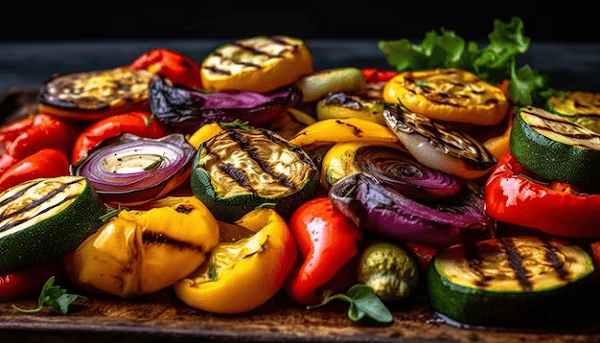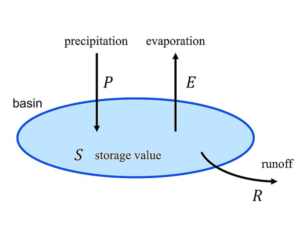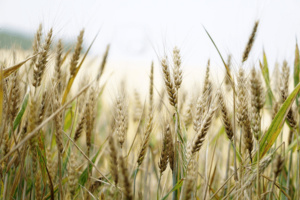Vegetables Baked- Baked vegetables can be a delicious and healthy side dish or main course. Here’s a simple recipe for baked vegetables:
Ingredients:
- Assorted vegetables of your choice (e.g., carrots, broccoli, cauliflower, bell peppers, zucchini, sweet potatoes)
- Olive oil
- Salt and pepper
- Herbs and spices (e.g., thyme, rosemary, garlic powder)
Instructions:
- Preheat the Oven: Preheat your oven to around 400°F (200°C).
- Prepare the Vegetables: Wash and chop the vegetables into bite-sized pieces. Make sure they are relatively uniform in size for even cooking.
- Coat with Olive Oil: Place the chopped vegetables in a large bowl and drizzle with olive oil. Toss the vegetables until they are evenly coated. Olive oil adds flavor and helps the vegetables brown during baking.
- Season: Sprinkle salt, pepper, and your choice of herbs and spices over the vegetables. Mix well to ensure even seasoning.
- Spread on a Baking Sheet: Arrange the seasoned vegetables in a single layer on a baking sheet. You can line the sheet with parchment paper for easy cleanup.
- Bake: Place the baking sheet in the preheated oven and bake for 20-30 minutes, or until the vegetables are tender and slightly browned. You may want to toss the vegetables halfway through the cooking time for even browning.
- Serve: Once the vegetables are cooked to your liking, remove them from the oven. You can squeeze a bit of fresh lemon juice over the top for added brightness. Serve as a side dish or with a protein of your choice.
Feel free to customize the recipe with your favorite vegetables and seasonings. Baked vegetables are versatile and can complement a variety of meals.
What is Vegetables Baked
“Baked vegetables” generally refers to a dish where various vegetables are prepared by baking them in an oven. This cooking method involves placing the vegetables in a baking dish or on a baking sheet, seasoning them with herbs, spices, and often some oil, and then roasting them until they are tender and flavorful.
The choice of vegetables can vary widely based on personal preference and what’s in season. Common vegetables used in baked vegetable dishes include potatoes, carrots, broccoli, cauliflower, bell peppers, zucchini, and onions. The baking process allows the vegetables to caramelize, intensifying their flavors and creating a delicious, slightly crispy texture on the outside.
Baked vegetables can be served as a side dish alongside proteins like chicken, fish, or beef. They can also be incorporated into grain bowls, salads, or served as a standalone vegetarian or vegan dish. The method is popular because it’s relatively simple, requires minimal hands-on time, and yields a tasty and nutritious result.
Who is Required Vegetables Baked
If you’re asking who might require or benefit from including baked vegetables in their diet, the answer is that baked vegetables can be a healthy and delicious addition to almost anyone’s diet. Here are a few groups of people who might particularly benefit:
- Vegetarians and Vegans: Baked vegetables can be a substantial and flavorful part of vegetarian and vegan meals. They offer a variety of nutrients and can serve as a satisfying main course or side dish.
- Health-Conscious Individuals: Baking vegetables is a cooking method that often requires less added fats compared to frying. It retains the nutritional value of the vegetables while bringing out their natural flavors.
- Those Watching Their Caloric Intake: Baked vegetables can be a lower-calorie option compared to some other cooking methods. It allows you to enjoy the taste and texture of vegetables without excessive added calories.
- People with Dietary Restrictions: Baked vegetables are versatile and can be easily customized to fit various dietary restrictions. For example, those on gluten-free, dairy-free, or low-carb diets can still enjoy a variety of baked vegetables.
- Individuals Looking to Increase Vegetable Intake: If you’re trying to eat more vegetables, baking them can make them more appealing and flavorful. This can be especially helpful for individuals who are not big fans of raw vegetables.
- Anyone Seeking Nutrient-Rich Options: Vegetables are rich in vitamins, minerals, and fiber. Baking them helps retain these nutrients, making it a healthy cooking method.
Remember to vary the types of vegetables you use to ensure a diverse range of nutrients. Additionally, consider incorporating different herbs and spices for added flavor without relying too heavily on salt or unhealthy fats.
When is Required Vegetables Baked

Baked vegetables can be enjoyed at any time and are versatile enough to fit into various meals and occasions. Here are some instances when baked vegetables might be particularly appealing:
- As a Side Dish for Meals: Baked vegetables make a fantastic side dish for a variety of meals. Whether you’re serving grilled chicken, roasted fish, or a vegetarian main course, baked vegetables can complement the flavors and add nutritional value.
- Holiday Dinners: Baked vegetables can be a colorful and flavorful addition to holiday feasts. Roasted Brussels sprouts, sweet potatoes, or a medley of seasonal vegetables can be a hit during Thanksgiving, Christmas, or other festive occasions.
- Potluck or Dinner Parties: Baked vegetables are easy to prepare in large quantities, making them suitable for potluck dinners or gatherings. They can be a crowd-pleaser and provide a healthier alternative to some other side dishes.
- Meal Prep Sessions: Baked vegetables can be a great option for meal prep. You can roast a batch of mixed vegetables at the beginning of the week and use them in various meals, such as salads, grain bowls, or wraps.
- Quick Weeknight Dinners: Baking vegetables is a relatively hands-off cooking method, making it suitable for busy weeknights. You can toss together a tray of vegetables, season them, and let them roast while you prepare the rest of your meal.
- Vegetarian or Vegan Entrees: Baked vegetables can serve as the main course for vegetarian or vegan meals. A flavorful combination of roasted vegetables, perhaps served over quinoa or couscous, can be a satisfying and nutritious dish.
- Snacking: Roasted vegetables can also be a tasty and healthy snack. Roasted chickpeas, sweet potato fries, or kale chips are examples of baked vegetable snacks.
Remember, the versatility of baked vegetables means you can enjoy them whenever you’re in the mood for a tasty and nutritious dish.
Where is Required Vegetables Baked
Baking vegetables can be done in an oven, which is a common kitchen appliance found in households worldwide. Here’s a simple guide on where to bake vegetables:
- Home Oven: The most common place to bake vegetables is in your home kitchen using a conventional oven. Preheat the oven to the desired temperature (usually around 400°F or 200°C for most vegetables), arrange the vegetables on a baking sheet or in a baking dish, and place them in the oven for the specified time until they are tender and slightly browned.
- Toaster Oven: If you don’t have access to a full-sized oven or are cooking smaller quantities, a toaster oven can be a convenient alternative. It works similarly to a conventional oven but on a smaller scale.
- Outdoor Grill or Barbecue: Some vegetables can also be baked on an outdoor grill or barbecue. Use a grill-safe pan or wrap the vegetables in foil, then place them on the grill. This method imparts a smoky flavor to the vegetables.
- Campfire or Open Flame: If you’re camping, you can bake vegetables over a campfire or open flame. Wrap them in foil and place them in the coals, turning occasionally until they are cooked to your liking.
Regardless of the method you choose, the key is to ensure that the vegetables are evenly spread on a cooking surface to allow for proper heat distribution. Additionally, keep an eye on them to prevent burning and to achieve the desired level of doneness. The specific cooking time may vary depending on the type and size of the vegetables, so it’s always a good idea to check them periodically.
How is Required Vegetables Baked
Baking vegetables is a straightforward process, and the specific method can vary depending on the vegetables you choose and your personal preferences. Here’s a general guide on how to bake vegetables:
Ingredients:
- Assorted vegetables of your choice (e.g., carrots, broccoli, cauliflower, bell peppers, zucchini, sweet potatoes)
- Olive oil
- Salt and pepper
- Herbs and spices (e.g., thyme, rosemary, garlic powder)
Instructions:
- Preheat the Oven: Preheat your oven to around 400°F (200°C).
- Prepare the Vegetables: Wash and chop the vegetables into bite-sized pieces. Try to make the pieces relatively uniform in size for even cooking.
- Coat with Olive Oil: Place the chopped vegetables in a large bowl and drizzle with olive oil. Toss the vegetables until they are evenly coated. The oil helps with flavor and browning during baking.
- Season: Sprinkle salt, pepper, and your choice of herbs and spices over the vegetables. Mix well to ensure even seasoning.
- Spread on a Baking Sheet: Arrange the seasoned vegetables in a single layer on a baking sheet. You can line the sheet with parchment paper for easy cleanup.
- Bake: Place the baking sheet in the preheated oven and bake for 20-30 minutes, or until the vegetables are tender and slightly browned. Toss the vegetables halfway through the cooking time for even browning.
- Serve: Once the vegetables are cooked to your liking, remove them from the oven. You can squeeze a bit of fresh lemon juice over the top for added brightness. Serve as a side dish or with a protein of your choice.
Feel free to customize the recipe with your favorite vegetables and seasonings. You can experiment with different combinations to suit your taste. The key is to monitor the cooking process, so the vegetables are cooked to the desired level of tenderness and caramelization.
Case Study on Vegetables Baked
The Smith Family’s Journey to Healthy Eating with Baked Vegetables
Background: The Smith family, comprised of two working parents (John and Sarah) and two school-aged children (Emma and Jake), decided to make a conscious effort to improve their eating habits. They were looking for ways to incorporate more vegetables into their meals and reduce their reliance on processed foods.
Objective: To establish a healthier and more balanced diet for the entire family by incorporating a variety of baked vegetables into their weekly meal plan.
Implementation:
- Meal Planning: The family started by planning their weekly meals, ensuring that each dinner included a variety of vegetables. They decided to experiment with baking vegetables as it was a cooking method that seemed both simple and appealing.
- Vegetable Selection: The Smiths chose a mix of colorful vegetables, including broccoli, carrots, bell peppers, and sweet potatoes, to create a visually appealing and nutritionally diverse array.
- Preparation: John and Sarah involved Emma and Jake in the preparation process. Together, they washed, chopped, and seasoned the vegetables with olive oil, salt, pepper, and a blend of herbs like rosemary and thyme.
- Baking Routine: They established a routine of baking vegetables two to three times a week. On busier days, they opted for quick-cooking vegetables, while on weekends, they indulged in a larger variety with more intricate seasoning.
- Versatility in Dishes: The family explored different ways to incorporate baked vegetables into their meals. They served them as a side dish, mixed them with grains like quinoa or brown rice, and even used leftovers in wraps or salads.
- Positive Outcomes:
- The Smiths noticed an increase in their vegetable intake, contributing to a more nutrient-dense diet.
- The children found the colorful and flavorful baked vegetables appealing, making dinnertime more enjoyable.
- John and Sarah appreciated the simplicity of the cooking process and the fact that they could prepare a healthy side dish without spending too much time in the kitchen.
- Healthy Lifestyle Habits: Encouraged by the positive changes, the family began exploring other healthy lifestyle habits, such as regular physical activity and mindful eating.
Conclusion: The Smith family’s journey to incorporate baked vegetables into their meals not only improved their nutritional intake but also fostered a sense of togetherness during meal preparation. This case study showcases how a simple and versatile cooking method can contribute to positive changes in a family’s overall well-being.
White paper on Vegetables Baked
Title: Enhancing Nutrition and Flavor through Baked Vegetables
Abstract: This white paper delves into the nutritional and culinary aspects of incorporating baked vegetables into everyday meals. By exploring the benefits, diverse recipes, and potential health impacts, this document aims to encourage individuals and families to embrace baked vegetables as a versatile and delicious component of a balanced diet.
1. Introduction: a. Brief overview of the rising interest in healthier eating habits. b. Introduction to the concept of baking vegetables as a nutritious and accessible cooking method.
2. Nutritional Benefits: a. Examination of the nutritional content retained through baking. b. Highlighting the importance of diverse vegetables for a well-rounded nutrient profile. c. Comparison with other cooking methods in terms of nutrient preservation.
3. Health Impacts: a. Discussion on how incorporating baked vegetables can contribute to overall health. b. Exploration of potential benefits for weight management, heart health, and digestion. c. Review of studies linking increased vegetable consumption to a reduced risk of chronic diseases.
4. Culinary Versatility: a. Showcase of various vegetables suitable for baking. b. Presentation of creative and diverse recipes, including different herb and spice combinations. c. Exploration of baked vegetable applications in appetizers, main courses, and side dishes.
5. Practical Considerations: a. Tips for effective meal planning and preparation. b. Time and cost considerations for incorporating baked vegetables into a busy lifestyle. c. Guidance on proper storage and reheating for optimal taste and texture.
6. Family and Community Impact: a. Discussion on the potential positive effects on family meals and communal dining. b. Exploration of how shared cooking experiences can contribute to overall well-being.
7. Case Studies: a. Real-life examples of individuals or families who have successfully integrated baked vegetables into their diets. b. Highlighting the positive outcomes and challenges they faced during the transition.
8. Future Trends and Innovations: a. Examination of emerging trends in baked vegetable recipes. b. Discussion on potential innovations in cooking techniques and equipment.
9. Conclusion: a. Recap of the nutritional and culinary advantages of baked vegetables. b. Call to action for individuals, families, and communities to embrace baked vegetables as a key component of a health-conscious lifestyle.
10. References: A comprehensive list of academic studies, cookbooks, and reputable sources supporting the information presented in the white paper.
This white paper aims to provide a thorough understanding of the benefits and practical considerations surrounding the incorporation of baked vegetables into daily meals. Through a combination of nutritional insights, culinary inspiration, and real-world examples, it aspires to motivate and guide readers toward a healthier and more flavorful dietary journey.
Industrial Application of Vegetables Baked
The industrial application of baked vegetables extends beyond traditional home cooking and has gained traction in various food manufacturing sectors. Here are several industrial applications of baked vegetables:
- Ready-to-Eat Meals and Frozen Foods: Industrial food manufacturers often incorporate baked vegetables into ready-to-eat meals and frozen food products. These meals can include vegetable lasagnas, casseroles, and stir-fries where baked vegetables maintain their texture and flavor after freezing and reheating.
- Snack Foods: Baked vegetable snacks have become popular in the snack food industry. Companies produce baked vegetable chips or crisps from vegetables like sweet potatoes, beets, or kale. These snacks offer a healthier alternative to traditional fried chips and cater to consumers seeking nutritious on-the-go options.
- Bakery Products: Baked vegetables find their way into various bakery products, enhancing both the nutritional profile and taste. Vegetable-filled bread, rolls, and pastries provide an innovative approach to incorporating vegetables into traditionally carb-heavy products.
- Ingredient in Food Manufacturing: Baked vegetables, once processed into flakes or powders, can be used as ingredients in the manufacturing of soups, sauces, and seasonings. These concentrated vegetable products contribute flavor and nutritional value to a wide range of food items.
- Health and Convenience Foods: The demand for healthier convenience foods has led to the inclusion of baked vegetables in health-focused product lines. These may include pre-packaged salads, grain bowls, and other convenience foods that emphasize a balance of nutrients.
- Baby and Toddler Foods: Baked vegetables are used in the production of baby and toddler foods, such as vegetable-based puffs or snacks. These products aim to introduce young children to a variety of vegetables in a palatable and convenient form.
- School and Institutional Catering: Industrial-scale catering services, including those serving schools, hospitals, and large institutions, often utilize baked vegetables in their menu planning. Baked vegetables can be incorporated into large-batch recipes for casseroles, side dishes, and mixed vegetable preparations.
- Pet Foods: The trend toward natural and wholesome ingredients in pet foods has led to the inclusion of baked vegetables. These may be found in dry kibble formulations or treats, providing pets with additional nutrients.
- Dehydrated Vegetable Products: Industrial dehydration processes can be applied to baked vegetables, creating dehydrated vegetable products. These dehydrated vegetables can be rehydrated for use in various food applications, extending shelf life and preserving nutritional content.
- Ingredient for Specialized Diets: Baked vegetables are often used as ingredients in specialized diet products, such as gluten-free or vegan foods. They contribute both flavor and nutritional value to products designed for individuals with specific dietary restrictions.
Incorporating baked vegetables into industrial food production aligns with consumer preferences for healthier, more natural, and flavorful options. As food technology advances, there’s likely to be continued innovation in the use of baked vegetables in various processed foods.





